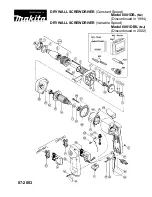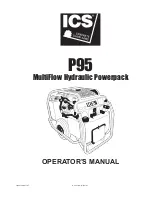
© National Instruments
|
2-7
RMX Programmable Power Supplies User Manual
CV Power Supply and CC Power Supply
The RMX programmable power supply can operate in constant-voltage (CV) or constant-current
(CC) mode. The operation mode is determined by the following three values.
•
The set output voltage (V
S
)
•
The set output current (I
S
)
•
The load resistance (R
L
)
The operation modes are described below.
Figure 2-12.
RMX Programmable Power Supplies Operation Modes
The above figure shows the operation modes of an RMX programmable power supply. The load
resistance is denoted as R
L
. The compliance resistance R
C
is calculated from the set voltage and
current (R
C
= V
S
/I
S
). The power supply is designed so that it operates in CV mode in area A and
CC mode in area B. The boundary between the two operation modes is the line defined by R
L
=
R
C
. This line represents the load at which the output voltage equals the set voltage and the output
current equals the set current. If load resistance R
L
is greater than the compliance resistance R
C
,
the operating point falls in area A, and the RMX programmable power supply will operate in CV
mode (point p). In this case, the set current I
S
operates as a current limit.
When operating in CV mode, the output voltage is maintained at the programmed voltage
setpoint. The output current I is determined by the equation I = V
S
/R
L
and is less than current
limit I
S
. The actual current that flows is determined by the voltage setpoint and the load
resistance and will not necessarily be equal to the programmed value.
For loads which may cause transient current spikes, current I
S
must be set so that the peak value
does not reach the current limit.
Conversely, if load resistance R
L
is less than the compliance resistance R
C
, the operating point
falls in area B, and the RMX programmable power supply operates in CC mode (point q). In this
case, set voltage V
S
operates as a voltage limit.
0
S
I
m
a
x
I
V
S
V
m
a
x
Output current I
out
Crossover point
A = CV mode area
B = CC mode area
V
S
= Set voltage
I
S
= Set current
R
C
= Vs/Is (Ohm’s Law)
R
L
= Load resistance
V
max
= Maximum settable voltage
I
max
= Maximum settable current
R
L
= R
C
R
L
> R
C
R
L
< R
C
p
q
A
B
Output voltage V
out
















































